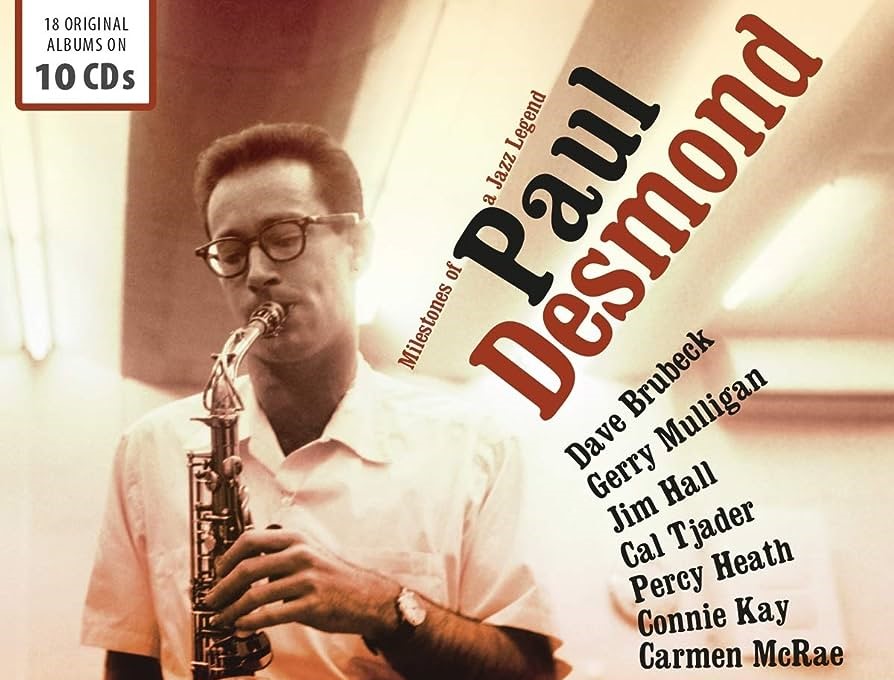The composer of the first million-selling single in jazz history: Who is Paul Desmond?
Desmond, who found his own sound at a time when Charlie Parker's crazy bebop style was worshiped, says that his alto tone resembles a "dry martini". With this sound, it has become a favorite of both critics and fans.

Paul Desmond is an American alto saxophonist and composer born in San Francisco. A musician who has always been respected for his soft tone and elegant lyricism in his improvisations, Desmond is one of the most popular artists of the West Coast "cool jazz" scene, as well as a unique name with his own sense of humor.
Desmond, who found his own sound at a time when Charlie Parker's crazy bebop style was worshiped, says that his alto tone resembles a "dry martini". The artist, who became a favorite of both critics and fans with this sound and won first place in surveys one after another, states the following about this situation: "I won a few awards as the world's slowest alto saxophonist, and they even gave me a special award for my silence in 1961." Dave Brubeck, with whom he worked for 16 years, has the following opinion about Desmond: "In my opinion, his lyricism is unique because in his playing a superior intelligence is combined with great emotionality, which you usually cannot find in a single person."
Paul Desmond (born Paul Emil Breitenfeld; November 25, 1924 – May 30, 1977) was an American jazz alto saxophonist and composer and proponent of cool jazz. He was a member of the Dave Brubeck Quartet and composed that group's biggest hit, "Take Five".
Paul Desmond, who was influenced by Lester Young and Pete Brown at the beginning of his musical career, played clarinet in the orchestras of Jack Fina and Alvino Rey and achieved worldwide fame as a member of the Dave Brubeck Quartet. Let's tell you how their musical partnership began, because the story is interesting: Desmond, who started working at the Geary Cellar club in San Francisco at the end of the Second World War, hired Brubeck as a pianist, but after a while, he first halved his salary and then started to work especially in gambling. When he takes a job in a more remote area to play, he fires him and replaces him with another pianist.
In 1950, he worked with Jack Fina in New York but returned to California after hearing Brubeck's trio on the radio. Brubeck, who is married and has three children, has not forgotten his previous experience with Desmond, so he strictly warns his wife not to let him step into the house. Desmond still tries his luck and one-day heads to the artist's home in San Francisco. While Dave is hanging the diapers in the back, his wife Lola takes him home and takes him straight to her husband. But despite all her pleading, Brubeck won't be convinced to hire her, until she offers to babysit his children...
Founded in 1951 with the participation of Eugene Wright on bass and Joe Morello on drums, the Dave Brubeck Quartet became popular with college-aged audiences primarily through the concerts it gave on campuses. The 1953 album Jazz at Oberlin, a live recording of a concert at Oberlin University, was the band's first major work. Although Desmond's melodic solos constituted a marked contrast to Brubeck's polytonal rhythms, the band, whose success was increasing day by day, would tour the world, give around 300 concerts a year, and sign a 4-album deal with Columbia Records. The pinnacle of this great success, which would put Dave Brubeck on the cover of Time magazine in 1954, is undoubtedly "Take Five", composed by Desmond in 1959 and the first single in jazz history to reach a million sales.
Let's hear Desmond's opinion again about the Quartet's theme piece and the composition that is indispensable for all his concerts and which also earned him a small fortune from royalties: "I thought it was really useless at the time. Ronson used all the rights to "Take Five" throughout his life." "I was even ready to replace it with a brand new electric shaver. It was the bridge part that really made the composition work, which I still shudder to think of as we almost never used it."
Paul Desmond, who entered an unofficial retirement period with the dissolution of the band in 1967, would not pick up his saxophone for three years. He wrote his memoirs in a humorous style, "How Much of You Are There in the Quartet?" During this period, when he attempted to write a book called (which is a question he is constantly asked by stewardesses), but could not finish it, the artist also wrote articles for the British humor magazine Punch.
Paul Desmond, who performed with Gerry Mulligan at the New Orleans Jazz Festival in June 1969, received positive reactions from both critics and listeners. Unlike Brubeck, Desmond, who had many things in common with Mulligan, would share the stage with the artist again in 1974 as part of Dave Brubeck's Two Generations tour. When he was offered to play with guitarist Jim Hall at New York's famous Half Note jazz club in 1971, he said in his usual humorous way that he only accepted the job because he lived nearby and could get out of bed and come to work immediately. The duo then filled the club night after night. Desmond, who accompanied The Modern Jazz Quartet at a Christmas concert at New York Town Hall in 1971, also played with his old friend Chet Baker on several albums. However, the most brilliant work of the artist during this period was his collaboration with 3 musicians from Toronto. Some of his club performances with his "Canadian Quartet", consisting of Ed Bickert on guitar, Don Thompson on bass, and Jerry Fuller on drums, were recorded and released by Don Thompson, who was also a recording engineer.
